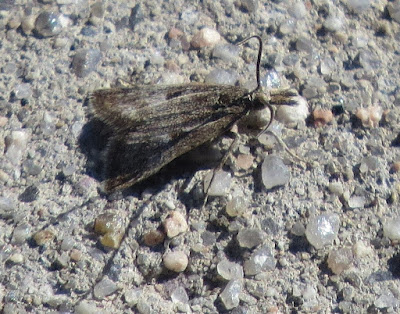Here at the end of September, I am gearing up for the Heartland Book Festival in Kansas City, Missouri, on Saturday, October 11. With your help, we can recruit a legion of new bugwatchers, and change how we relate to other species, and each other. Allow me to let you in on upcoming events, and some secrets of the author profession that might surprise you.
I cannot tell you how excited and honored I am to be participating as a vendor in the Heartland Book Festival. I will be one of only twenty-five authors selected from over two hundred applicants. This is perhaps the first time I have truly felt like a professional writer and author. I am hoping that this is only the beginning. Please recommend to me, in the comments, other book festivals that you have enjoyed, where nonfiction authors are celebrated alongside the novelists.
Speaking engagements are another way for authors to get traction in the marketplace. I will be presenting a talk on spiders for Topeka Audubon the evening of October 7, then another bugwatching presentation for Gardeners Connect on November 11 in Kansas City, Missouri.
There are already dates taken up on my 2026 calendar, too. On January 8, I will be presenting a webinar for Smithsonian Associates. I will announce when tickets go on sale. February 10, 2026, you will find me at the Plan it Native Landscapes Conference in Kansas City, Missouri, where I will present “Beyond Bees and Butterflies: Embracing and Conserving Local Insects.” After that program, I am open to invitations for any other events you may want to suggest.
There is a persistent myth that authors earn much of their living from royalties on sales of their books. This may be true for Stephen King, but certainly not for those of us in niche markets like natural history. What usually happens is that the publisher pays an author a cash advance to begin the book, maybe another once the manuscript is completed, and perhaps another once the book goes on the market. Ideally, brisk sales quickly make up for the advances and the book breaks even. Only after that point do royalties start producing positive numbers. None of my books, to this point, have produced royalties. That is not uncommon, but there is no reason we can’t buck that trend. How do we do that?
Much as I loathe Amazon, the retail giant, posting positive reader reviews there can boost sales considerably. The same can be said for Goodreads, and other such platforms. Book reviews in magazines, newspapers, blogs, podcasts, and social media are also helpful. Thank you for considering.
Invitations to do book signings, or present at conferences and meetings, are always welcome. Obviously, remote, virtual appearances are easiest at this time, when airline travel is undependable at best, Covid is making a resurgence, and clubs and organizations are facing financial hardship due to cuts in federal grants and other sources of funding. That said, if I can string together more than a couple of engagements in any given city, or small region, I will certainly entertain in-person events.
Thank you for all of your moral support, book purchases, in-kind donations, and other help to this point. I hope that I am doing right by you, and that I get the chance to express my appreciation in person at some point.




















































